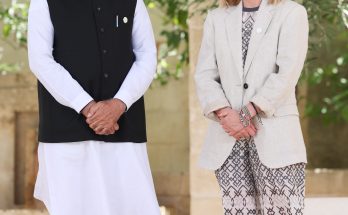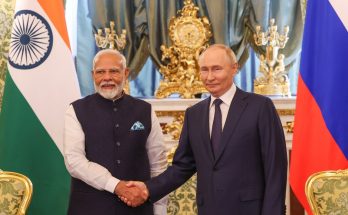 The current discourse on poverty in India, triggered by a report of the Planning Commission last week claiming that the official poverty headcount ratio had come down from 37 per cent of the total population in 2004-05 to 22 per cent in 2011-12, hardly reveals ground realities.
The current discourse on poverty in India, triggered by a report of the Planning Commission last week claiming that the official poverty headcount ratio had come down from 37 per cent of the total population in 2004-05 to 22 per cent in 2011-12, hardly reveals ground realities.
Here’s what it means: 137 million people have been lifted out of poverty during the period, 2004-05 (when the Congress-led UPA government came to power) to 2011-12.
The combined opposition from the Left parties to the BJP took this opportunity to take up cudgels against the UPA government for the ludicrous suggestion that the poverty cut-off line was Rs 27 per day per capita for rural areas and Rs 33 for urban areas at 2011-12 prices.
Then there were some Congress leaders who cut a sorry figure when they claimed that a person could eat a meal in Rs 5 or Rs 1.
Both camps failed to see the real point and seemed incapable of acquitting themselves honourably in the debate. The entire political class indulged in a lowly, high-decibel debate which was entirely devoid of content.
The unkindest cut was perhaps dealt by news channels as they repeatedly insulted the common man by the ridiculous claims and counter-claims of some of the representatives of the country’s political class.
The discourse on poverty also reflected the viewpoints of two world-class economists – Nobel laureate Amartya Sen and Columbia University economist Jagdish Bhagwati. While Sen champions integrating development expenditure to fight poverty within growth, Bhagwati stands for rapid growth, which he claims, will take care of the underprivileged as results of growth trickle down to the poor.
So, what is this method of poverty measurement?
The present methodology for determining poverty is based on consumption expenditure, and has been in use for many decades and no government in the last four decades thought about sharpening it. A fixed poverty line was established in 1973-74, in terms of income/food requirement. It was stipulated that the calorie-standard for an individual in rural areas was 2400 calories and 2100 calories in urban areas. Then the cost of foodgrain (about 650 gm) that fulfils this normative standard was calculated. This cost was termed poverty line.
In 1978, this was Rs 61.80 per person per month for rural areas, and Rs 71.30 for urban areas. Since then, the Planning Commission has been calculating the poverty line every year adjusting for the rate of inflation.
In 2000-01, the poverty line rose to Rs 328 for rural areas and Rs 454 for urban areas that changed to Rs 368 and Rs 560 for rural areas and urban areas respectively. This was the barest minimum to support the food requirement and did not include other basic requirements like health, education and shelter.
What is the poverty line useful for?
Traditionally, poverty line was used to explain the downward percolation of economic growth to the poor. This was imperative for assessing whether the country’s development was being experienced by the poor in the same way as it impacted the rich, and the rate of poverty decline.
The benchmark also helped to judge which states were doing better in poverty elimination. One must remember here that in the 1970s, India experienced hunger deaths and the issue of poverty had acquired an important status in the development discourse.
In recent time, the Tendulkar Committee gave a quantitative definition to the country’s poverty. In 2011-12, the Tendulkar poverty line was Rs 4000 per rural and Rs 5000 per urban family of five. Though opposed and criticised by many, it still nearly corresponded to the World Bank’s well-established poverty line of $ 1.25 per day in Purchasing Power Parity terms. The World Bank’s poverty line translates to about 50 cents/day in current dollar terms. Incidentally this definition is used by over 100 countries, by the United Nations and other international agencies.
And what is the present status of poverty and the poor?
There is no doubt that below-subsistence-level poverty has indeed fallen in our country, but a large section of people continue to be poor as seen from their non-access to basic services like shelter, public health, nutrition and education.
The present poverty line in today’s discourse should probably be called the starvation or destitute line. Like the World Bank, India too could have two lines-$ 1.25 denoting extreme poverty and $ 2 denoting moderate poverty. But a line or maybe two with any tag is required for statistical objectives. Figures help in allocation of resources and formulating policies and action plans.
And what has caused this furore over the cost of a meal?
The controversy that erupted as a result of the Planning Commission report was the fallout of the negative political environment in the country.
That the entire discourse centred on whether a person could have a day’s meal in Rs 33 in an urban area and Rs 27 in a rural area was a distressing sign of the apathy for the plight of the poor.
TV channels went to great trouble to prove that the said amount was insufficient to meet a person’s daily food requirement. No TV channel or any other forum tried to establish whether a poor person can cook two meals after purchasing the required ingredients. After all, the poor man doesn’t usually buy his meals from the market.
The government of the day and the Planning Commission became the villains in the debate as the media sensationalised the issue by selectively highlighting those aspects which are not central to the target of poverty eradication.
So, what facts are central to the debate and that were overlooked?
The fact that the government, despite falling poverty levels, thinks it fit to introduce food security is an important point that needs to be debated.
Or the fact that it will help the poor only if it reaches those that truly need it.
Corruption, graft and leakages in the PDS and government programmes and schemes make poverty a maze that must be negotiated with cunning skill, both by the poor and the government as both try to improve living standards.
In the end what could have been an insightful and incisive debate was hijacked by proponents of contrary points of view, with political leaders and political scientists intent on scoring empty debating points.
Let’s face it, both economists as well as politicians are, by their very definition, fundamentalists, and thus are averse to accepting the others’ arguments or view points.
Usually, the ground reality lies somewhere in between. Extreme poverty levels have indeed come down as a hunger deaths are rare, but living conditions of the poor continue to remain abysmal and below accepted norms as almost 60 percent of the Indian population remain deprived of basic amenities.
Indeed, as progress acquires the 21th century nuances, poverty must also be graded into bands such that different ‘kinds’ of poverty can be addressed in focused ways that make a real difference, and poverty ceases to be the cost of a plate of rice and dal at the corner dhaba.
(Dr Satish Misra is a veteran political commentator. The views expressed in this column are personal reflections of the author).
Author Profile
- India Writes Network (www.indiawrites.org) is an emerging think tank and a media-publishing company focused on international affairs & the India Story. Centre for Global India Insights is the research arm of India Writes Network. To subscribe to India and the World, write to editor@indiawrites.org. A venture of TGII Media Private Limited, a leading media, publishing and consultancy company, IWN has carved a niche for balanced and exhaustive reporting and analysis of international affairs. Eminent personalities, politicians, diplomats, authors, strategy gurus and news-makers have contributed to India Writes Network, as also “India and the World,” a magazine focused on global affairs.
Latest entries
 In ConversationJuly 26, 2024India-Italy defence collaboration can extend to third countries: Anil Wadhwa
In ConversationJuly 26, 2024India-Italy defence collaboration can extend to third countries: Anil Wadhwa In ConversationJuly 23, 2024Italy views India as a key partner in Indo-Pacific: Vani Rao
In ConversationJuly 23, 2024Italy views India as a key partner in Indo-Pacific: Vani Rao DiplomacyJune 29, 2024First BRICS unveils a roadmap for boosting tourism among emerging economies
DiplomacyJune 29, 2024First BRICS unveils a roadmap for boosting tourism among emerging economies India and the WorldJune 11, 2024On Day 1, Jaishankar focuses on resolving standoff with China
India and the WorldJune 11, 2024On Day 1, Jaishankar focuses on resolving standoff with China






